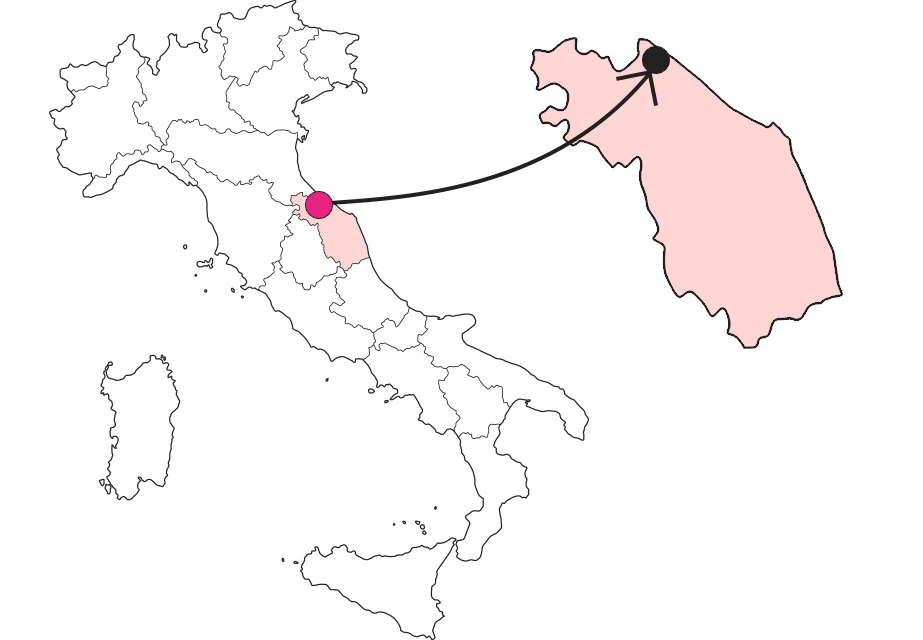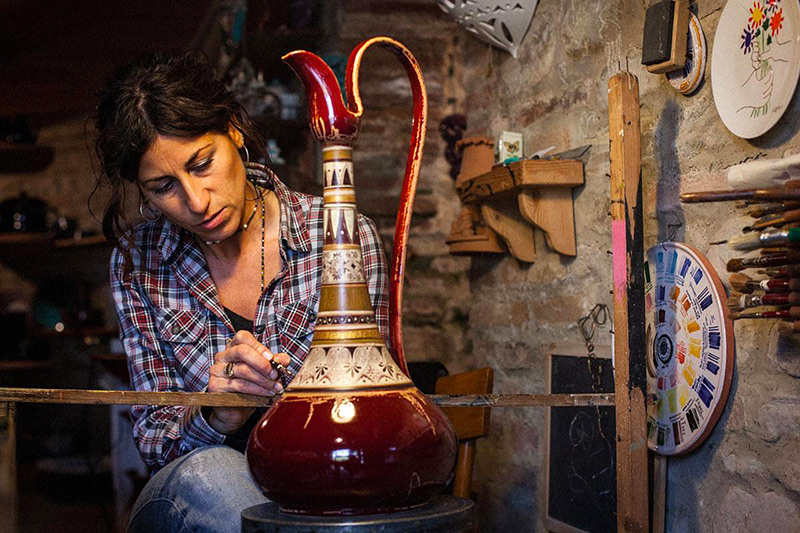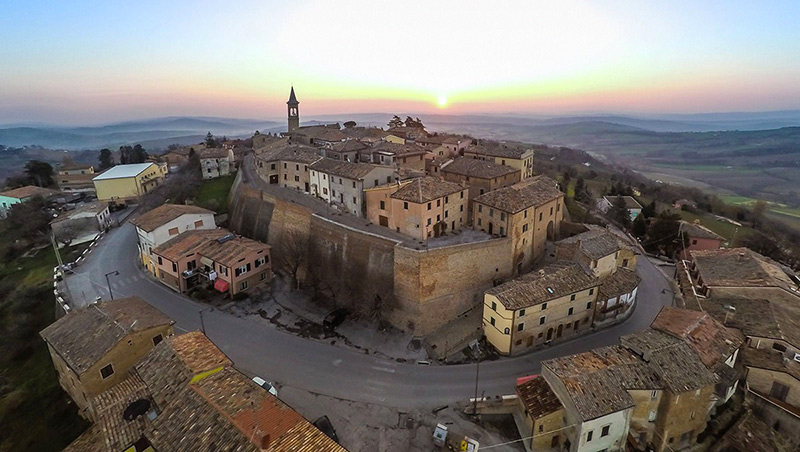





Where

Resilient shards
Fratte Rosa shards are not just objects. They are an ancient and original tradition in form and design. A centuries-old productive activity, and therefore deeply rooted in the very history of the village, which does not want to forget it or let it fall into disuse due to the emergence of more modern materials. These are excellences that the artisans of the village keep alive by making authentic masterpieces suspended between ancient and modern in their workshops.
The artisan activity related to terracotta is deeply rooted in Frattese history: until 1920, in fact, there were 12 kilns in the area that employed a total of about 50 workers. With the advent of aluminum and plastics, these activities ran the risk of extinction, and the craft workshops consequently declined in number.
In recent times, however, there has been a revival of tradition, with a number of workshops reopening that have recovered the local craft method. There are currently four craft workshops in operation, and today, as in the past, clay is quarried in the countryside adjacent to the ancient Convent of Santa Vittoria.
 From clay to the work of art
From clay to the work of artArt in the everyday
The name cocci, of clear popular origin, refers mainly to terracotta objects of household use. These are mainly containers for cooking and food preservation with traditional shapes, including vases, plates, pots, potholders, warmers, stoves, bocalettes, pine cones, oil pitchers and terrines, made on the potter's wheel and characterized by simple shapes and finishes.
What characterizes Frattese production from others is the intense and vivid bluish-black eggplant color, which slightly fades to a dark brown of extraordinary luster. Another peculiarity is the glaze, which is silica-based: the amount of silica and where to find the best to obtain the right amount of glaze is still a secret handed down from father to son.
On the trail of tradition
The tradition of cocciari is so deep-rooted and widespread in Fratte Rosa that a true terracotta itinerary has been created , combining the beauty of the center with historic workshops, one of which has belonged to a family of cocciari since 1730. Local craftsmanship combines original techniques with modern forms to make these beautiful artifacts timeless.
The itinerary can end with the Demoetnoantropological Museum of Earthenware, in the splendid setting of the 13th-century Convent of Santa Vittoria, which is worth a visit in itself. If you are curious to learn more, come and touch the tradition in the workshops of local artisans, you will not regret it!
 Fratte Rosa: treasure chest of precious shards
Fratte Rosa: treasure chest of precious shards
Enter the Map of Italy's Undiscovered Wonders and find treasures where you least expect it... Inspire, Recommend, Share...
The Map thanks:
In the Community
Enter the Map of Italy's Undiscovered Wonders and find treasures where you least expect it... Inspire, Recommend, Share...
Where





